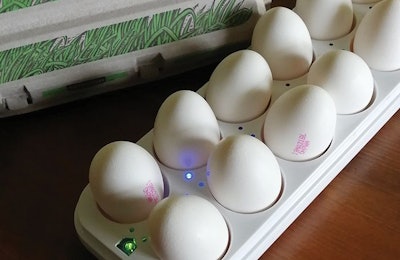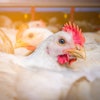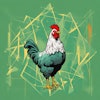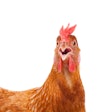
With the rapid development of the internet of things (IoT), where things – devices, sensors, actuators – are connected to the internet to help us turn information into actions, should we reconsider the never-resolved question – which was connected first, the chicken or the egg?
By 2050, the average farm is forecast to generate 4.1 million data points through the use of IoT sensors and devices.
The development of 5G technology will soon allow us to add many more sensors in our hen houses or on the range, allowing the remote monitoring of temperature, air flow, water pressure, ammonia level, health and behavior in predefined sections of a flock environment. Agriculture, however, like many other sectors, is struggling to make the most of the data collected by farmers on a daily basis, while there is so much wealth that remains dormant.
The use of artificial intelligence (AI) – the type that you really want to bring onto your farms – will soon allow us to improve data mining and analysis, leading to better decision-making processes and faster responses to challenges such as disease and animal welfare.
Some companies have already developed the concept of the connected cow and sheep, and hens could be next. Precision farming will change egg production, allowing for better resource and asset use, improved productivity, reduced labor and it will, hopefully, change the demographic of farming, bringing younger generations to the sector. Overall, connected hens will contribute to a smarter, more sustainable egg sector, caring more effectively than ever before for hens, people and the planet.
Value of transparency
Blockchain is likely our digital connection between the hens on the farm and the eggs on our plate. Designed as a platform to store and make visible to all the various aspects of the egg value chain, ranging from information about the soybeans grown in Brazil and used in the layer rations to the delivery of eggs to the grocery store, blockchain addresses consumer demands for transparency and trust.
Blockchain is already transforming the poultry supply value chains, especially in terms of traceability, with a simplification of the process used to verify product origin, quality attributes and production practices.
Knowing that nothing looks more like an egg than another egg, blockchain has particular potential where specialty products, such as organic, free-range and functional eggs are concerned. Transparency along the value chain is key to these niche segments of the market. Several global retailers have already started to add eggs to their blockchain portfolio of products, and the trend will increase even more over the coming years.
Finally, let’s talk about the connected egg. Through a search on the internet, I found the perfect IoT device that does just this. Named the Egg Minder, this is a smart egg tray connected to your smartphone via an app that also connects you to various home appliances. At any time, right at your fingertips, you can know how many eggs you have in your fridge and which in the tray are older and should be consumed first. This smart device also lets you set an expiration date for the eggs, alerting you when they are about to reach the end of their shelf life. When out grocery shopping, just check your phone app to see if eggs should be on your buying list.
While the digital version of the “chicken and egg” question remains unsolved, connected hens and eggs are here to stay, promising to deliver more value to the egg sector.

















